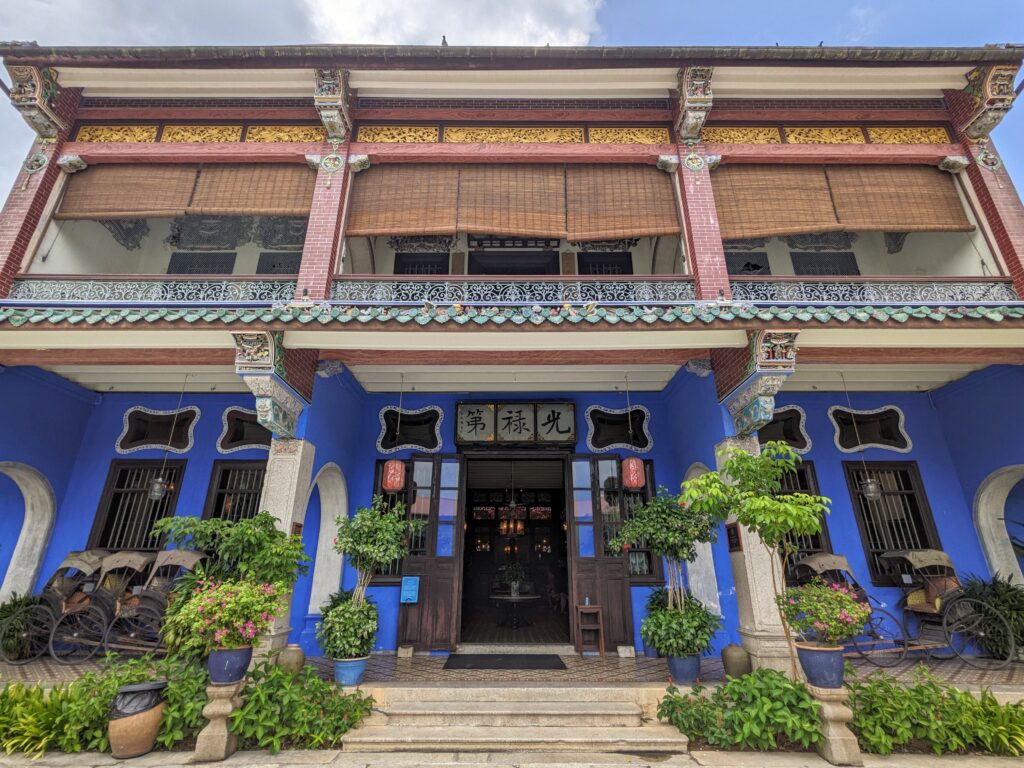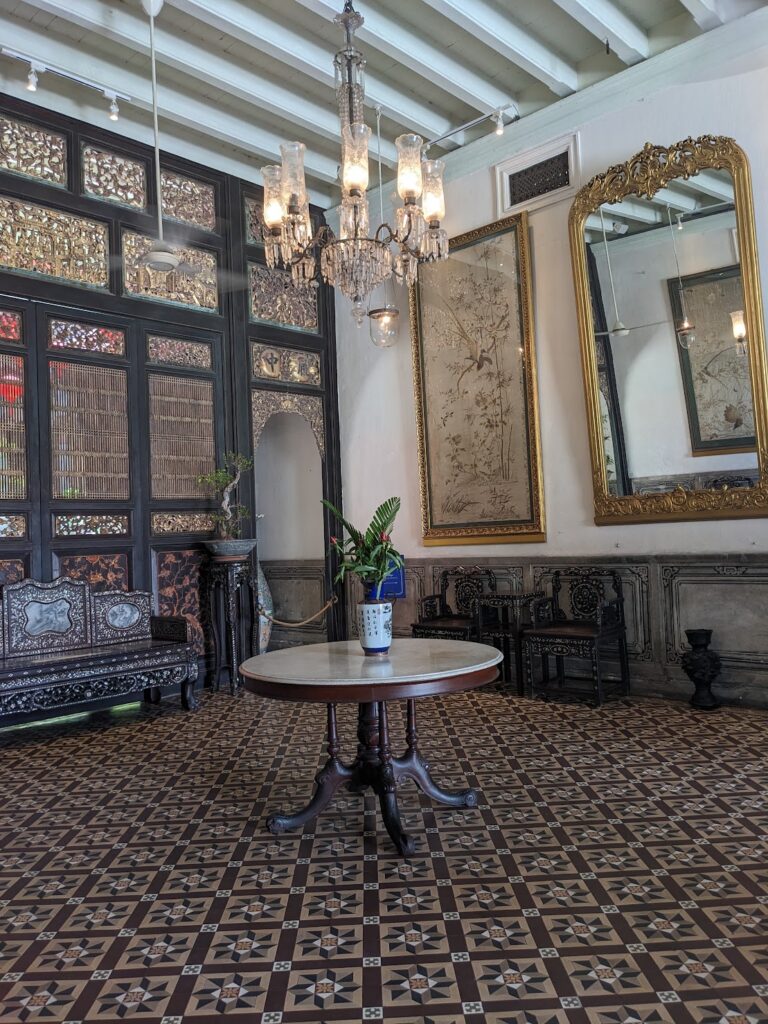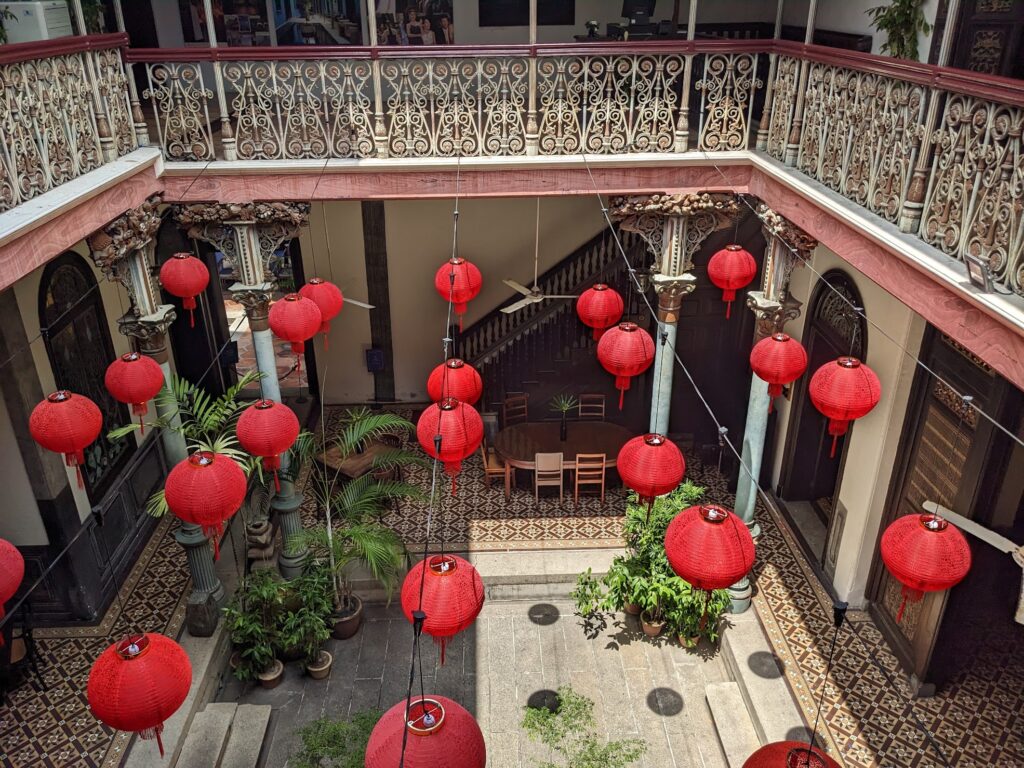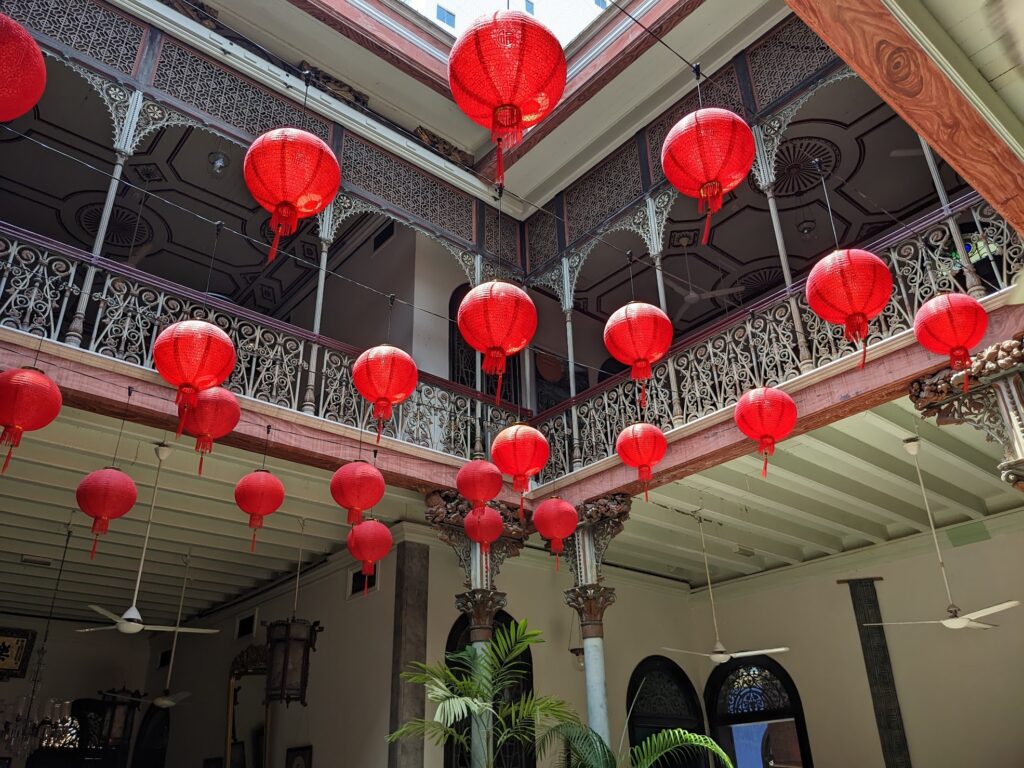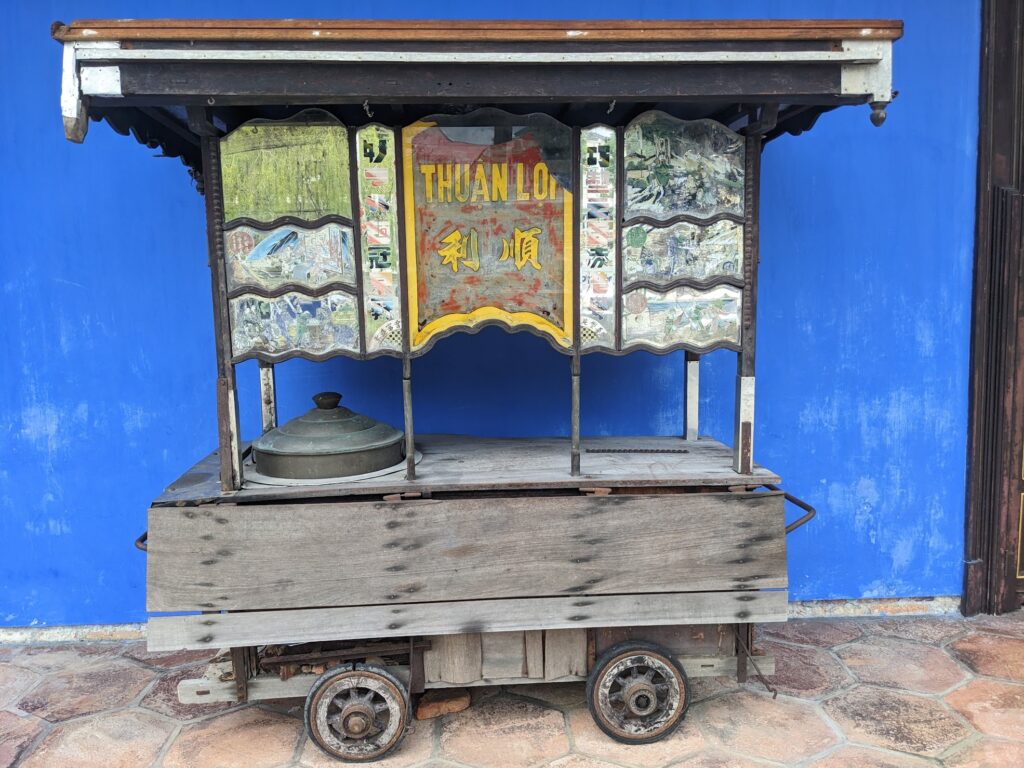Our next destination after Langkawi was George Town, the capital of the Penang region and Malaysia’s second city. Prior to the pandemic, the islands of Langkawi and Penang were connected via a direct ferry, although this route doesn’t seem to have returned as restrictions have lifted. Instead, we took a ferry to Kuala Perlis on the mainland, a taxi to the nearest train station, then a train south to Butterworth, finally followed by another ferry to George Town.
Although this journey took the best part of the day, it did give me plenty of time to read up on George Town and get excited about the food. The Lonely Planet’s description of Penang cuisine was so glowing that I was probably more excited about the food here than anywhere we’ve been before. In fact, we ate so much that it warrants its own post – coming soon!

When we weren’t eating, we spent most of our time exploring the beautiful architecture that can be found just about everywhere in the city centre, which was recognised as a UNESCO World Heritage Site in 2008. Much like its food, George Town’s architectural mix reflects the city’s historical demographics, with strong Chinese, European and Malay styles on show.



Even the hotel in which we were staying oozed character, having been restored and converted from a Chinese shophouse. Our room was one of the more unusual we’ve ever stayed in, being arranged around a central air well that went right through the building from the roof to ground level. We also loved the double wooden shutters over each of the (glassless) windows, but it did mean we had to pick between air conditioning and natural light!
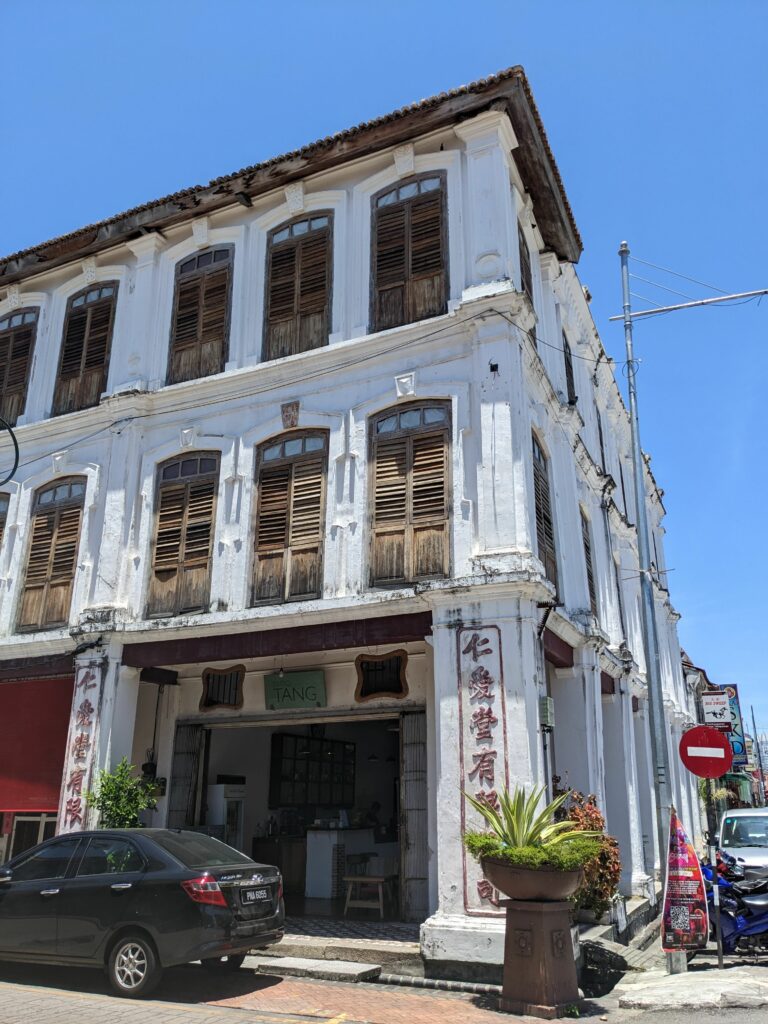
One of the most spectacular buildings in the city is the Cheong Fatt Tze house, commonly known as The Blue Mansion. The building tells the rags-to-riches story of its first owner, rising from humble beginnings as a poor Chinese migrant to a powerful businessman and politician, who was dubbed the Rockerfeller of the East by the New York Times. However, upon his death Cheong Fatt Tze left his fortune and house to his grandchildren, and it sadly fell into disrepair. The mansion was ultimately sold to a group of architects, who saved the building from demolition and meticulously restored it to its former glory. We thoroughly enjoyed learning about the house and its owner via a guided tour, and were particularly amused by the method through which Cheong Fatt Tze acquired his first business – by marrying the shop owner’s only daughter! Nowadays, it’s a luxury hotel as well as being open to the public, and it has also been used as a location in films including Indochine (1992) and Crazy Rich Asians (2018).
While George Town is well known for its diverse cultures, the Islamic month of Ramadan was evident across the city, with much of the population fasting during the day. Although there were certainly fewer food vendors and restaurants open during the day, this was made up for by the Ramadan food markets, which sprang to life in the late afternoon. It seemed most common to collect ready-cooked feasts from these markets to be taken home and enjoyed as a family, although we also noticed some smaller groups sitting patiently in front of their Iftar meal at restaurants waiting for sunset to break their fast.
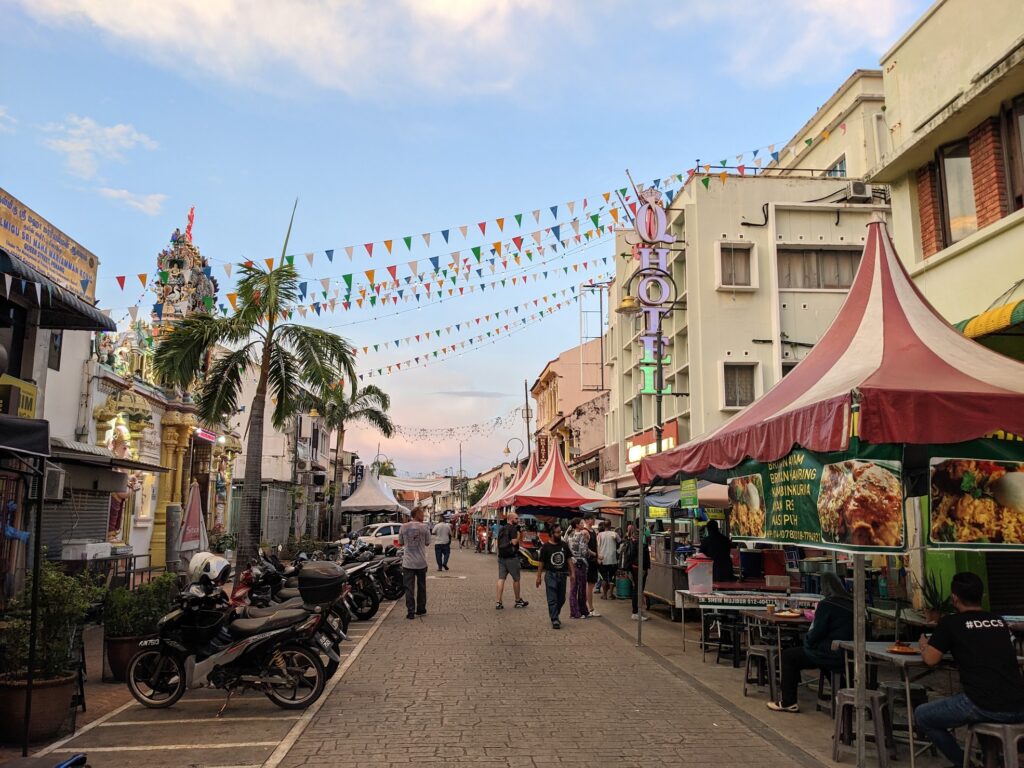
We managed to escape the city one afternoon on an excursion to the Tropical Spice Garden on Penang Island’s north-west coast. We took a one-hour local bus (after nearly giving up – we’d been waiting at the bus stop for so long!) around the coastal road, and were repeatedly thrown around in our seats by the aspiring rally driver in control of the bus. En route, I checked our progress on Google Maps only to notice that the garden was closing just ten minutes after our bus was due to arrive. With hindsight, taking a one-hour bus in the afternoon had all the hallmarks of one of my typically optimistic plans, but it seemed like a great idea at the time!
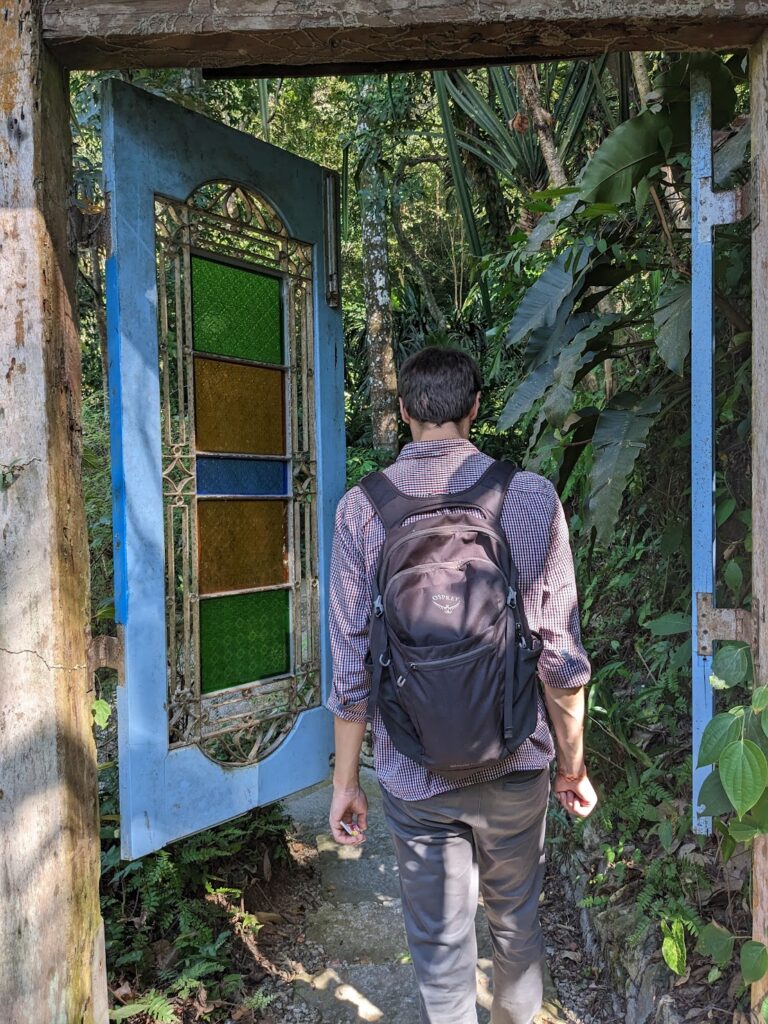
Upon arriving at the Tropical Spice Garden, not only did they let us in and provide instructions for how to break out after the main gate had been locked, but they also asked if we’d like to see a pit viper who had made the trees by the garden entrance her home over the past few weeks. We apprehensively accepted the offer, but still preferred not get too close to our slithery tree-dwelling friend!
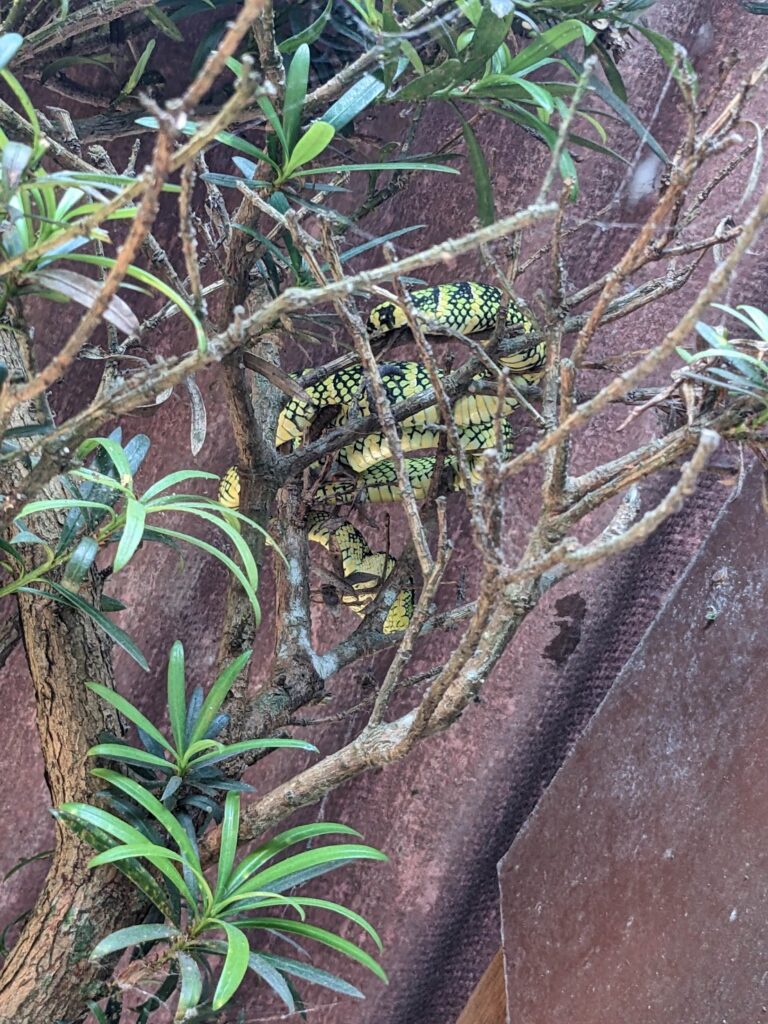
The garden itself was packed with interesting plants from cocoa to pepper, and coffee to nutmeg. We had the whole garden to ourselves (to be fair, it had already closed!) and thoroughly enjoyed learning about the plants via an audio guide. In addition to plants, the garden also featured some crazy slides that rewarded the hot work of climbing up through the terraces with a handy route back down. Although the diameter of the slides implied they were for children, the weight limit suggested otherwise, so it seemed rude not to try them out! We also came across a natural fish spa in a river, where tiny fish swarmed around our feet to nibble on any dead skin. It was a little unnerving and incredibly tickly – I didn’t manage to keep my feet in the water for long!



But to be honest, we spent the majority of our time in Penang sampling George Town’s hugely diverse cuisine. We’ll do our best to summarise it all in the next post!
